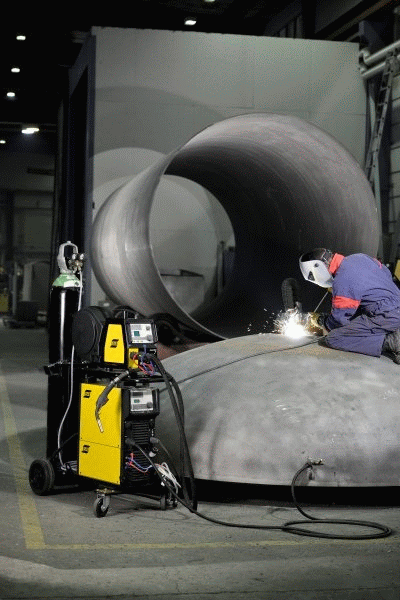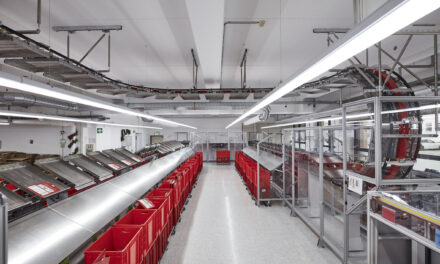 Welding and associated processes are widely used in manufacturing as well as for repair work and the restoration of damaged or worn work pieces. The most common applications include gouging and cutting, welding dissimilar and “difficult” steels, welding cast iron, wear resistant parts, aluminium as well as surfacing/hardfacing work.
Welding and associated processes are widely used in manufacturing as well as for repair work and the restoration of damaged or worn work pieces. The most common applications include gouging and cutting, welding dissimilar and “difficult” steels, welding cast iron, wear resistant parts, aluminium as well as surfacing/hardfacing work.
The gouging and cutting electrode is commonly used in repair work for the removal of weld defects or cracks prior to welding, for preparing grooves or holes and for cutting sheets or bars. The arc gouging electrode is equally suitable for non-alloyed steels and stainless steels, cast iron, aluminium and copper alloys, but not pure copper.
The process is based on the same principle as the welding electrode so that the arc burns between the end of the electrode and the work piece. However, the special coating of the arc gouging electrode forms a powerful gas spray which blows away the material melted by the arc, to create a shape such as a groove. Deep grooves can be made by repeated gouging. Normally, welding can then follow without further preparation; however, when gouging stainless steel, the carbonised surface layer needs to be removed by grinding.
When it comes to applications involving the welding of dissimilar metals, there is often a need to join non-or low-alloyed steel with austenitic stainless steel such as S355/AISI 316. These dissimilar joints are easy to weld with the right choice of consumables. Suitable filler materials are over-alloyed stainless consumables which give a weld metal that mixes with non-stainless steel to form a high-tensile austenitic or austenitic-ferritic weld.
Repair and maintenance welding often involves repairing so called “difficult-to-weld”
steels often found in shafts, gears and machine components. Materials include high carbon steels, quenched and tempered steels, tool-making steels, wear resistant steels and spring steels. “Unknown” steels also often require welding and, if the composition is not known or the type of steel is unclear, these should be treated as difficult-to-weld steels. A common characteristic of these steels is their tendency to harden which results in a high tendency to crack during welding. Preventing this requires preheating or post heating treatment which is often not possible when undertaking repairs.
Cast irons are iron alloys which contain 2–5% carbon as well as some silicon and manganese. Most cast iron grades are difficult to weld as they have a low tensile strength and can deform, making them brittle and welding stresses can easily cause cracks or flaws in weld joints. Welding is nevertheless possible, and cast iron pieces are commonly repaired by MMA cold-welding, generating as little heat as possible in the work piece. and welding lightly to release stresses.
Wear resistant steels are used in applications where the wear resistance provided by softer structural steels is not enough. Typical applications include structures which are exposed to abrasion from soil, rock or gravel in locations such as quarries, mines and equipment such as loaders and earth movers. Modern wear resistant steels are easy to weld and consumables are selected on a case-by-case basis depending on the properties required from the weld. When welding large thickness of wear resistant steel, the need for preheating can be eliminated by using austenitic stainless consumables.
Due to its light weight, good conductivity, high corrosion resistance and weldability, aluminium is widely used in many industrial applications from shipbuilding to transport equipment, packing materials, the electrical and aerospace industries. Aluminium production welding generally involves MIG or TIG welding. MMA welding is used rarely but is useful for small repair applications, especially when gas-shielded arc welding cannot be used.
The melting point of aluminium is around 600°C and its thermal conductivity is four times that of steel. This means that a relatively high amount of heat is required when welding aluminium and thick materials require preheating. The thermal expansion coefficient of aluminium is approximately twice as high as that of steel, which means that distortion potential from welding is similarly higher. Many aluminium alloys are fairly susceptible to heat cracks so that the weld is easily cracked as the weld pool hardens. For this reason, the right choice of consumables is imperative to avoid creating a crack sensitive composition in the weld pool.
Wear and tear results in considerable costs in different industries as worn-out materials and equipment require repairing. The forms of wear can include abrasion, metal to metal contact, impact wear, corrosion and high temperatures. Surfacing is a commonly used to counter wear and tear and is also a useful method for extending the service life of new parts before they are put into service. Surfacing is often referred to as hardfacing, which specifically refers to surfacing using a hard and wear resistant consumable. Depending on the application, softer consumables and corrosion resistant consumables can be used for surfacing but the operational requirements should be determined before choosing the consumable.
Further information about repair welding can be found in ESAB’s Repair and Maintenance Welding Handbook. The company’s welding consumables catalogue provides detailed information about products and comprehensive selection charts for different materials.
For a free copy call ESAB Publicity on 0800 389 3152 or e-mail info@esab.co.uk.
Follow ESAB (UK) on Facebook.




